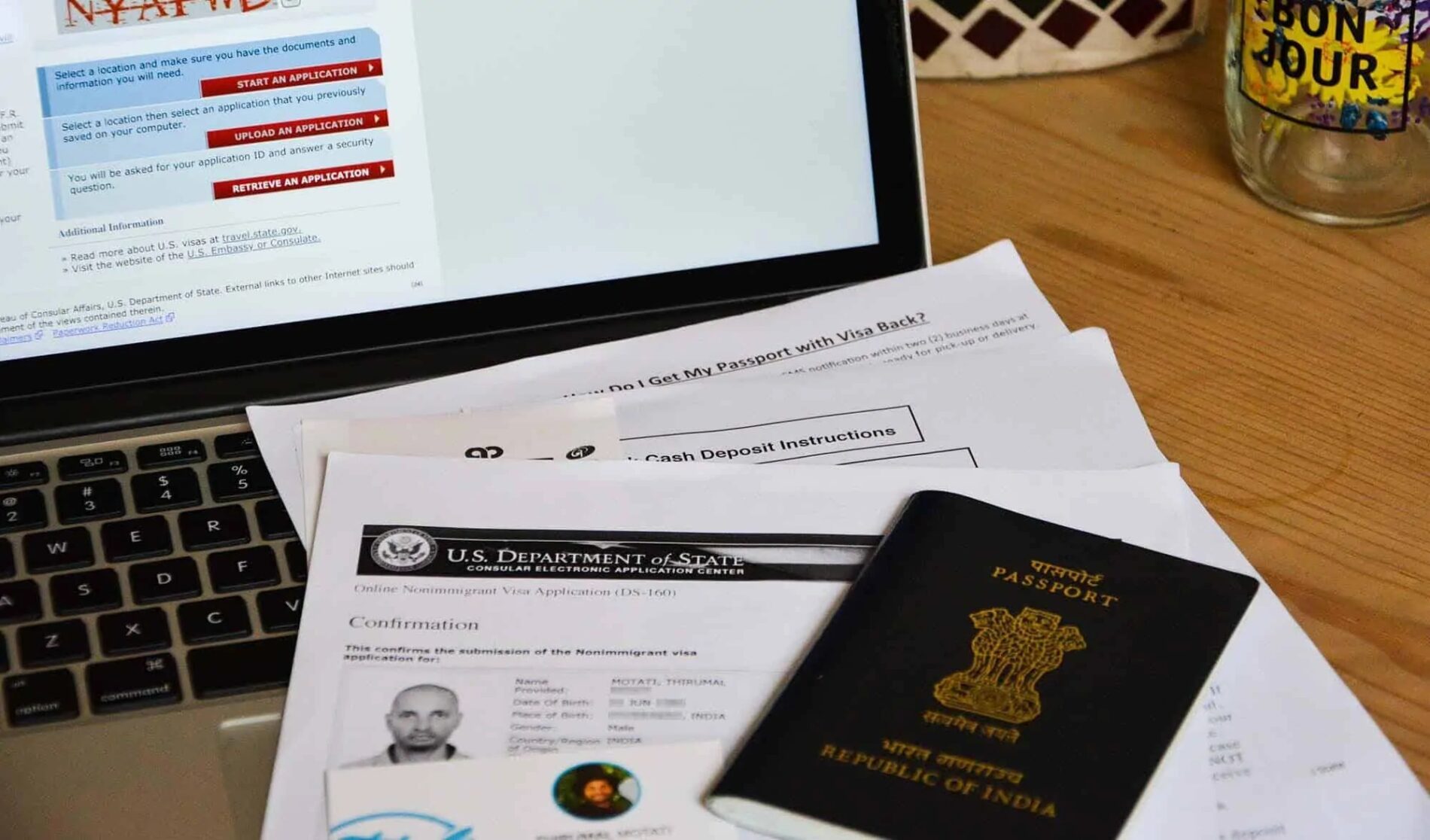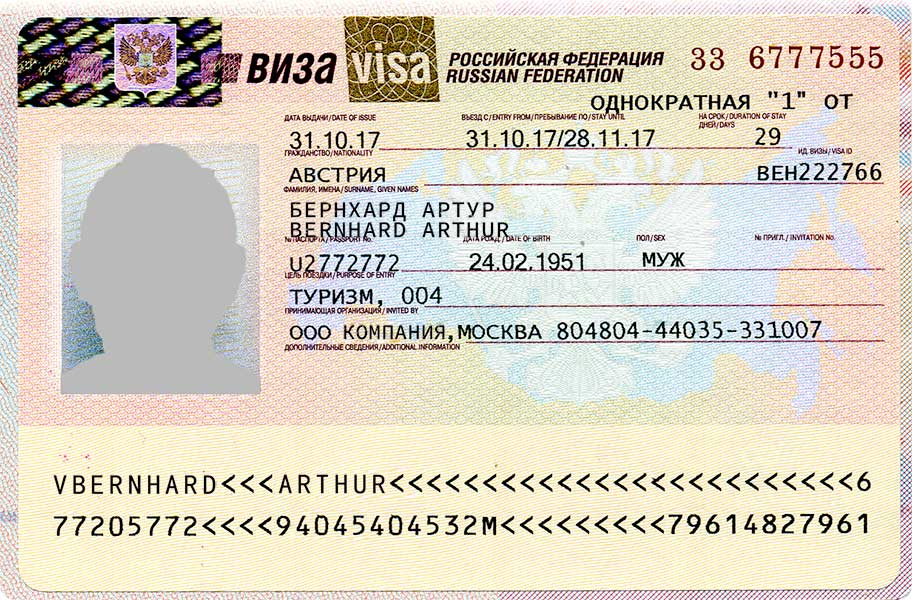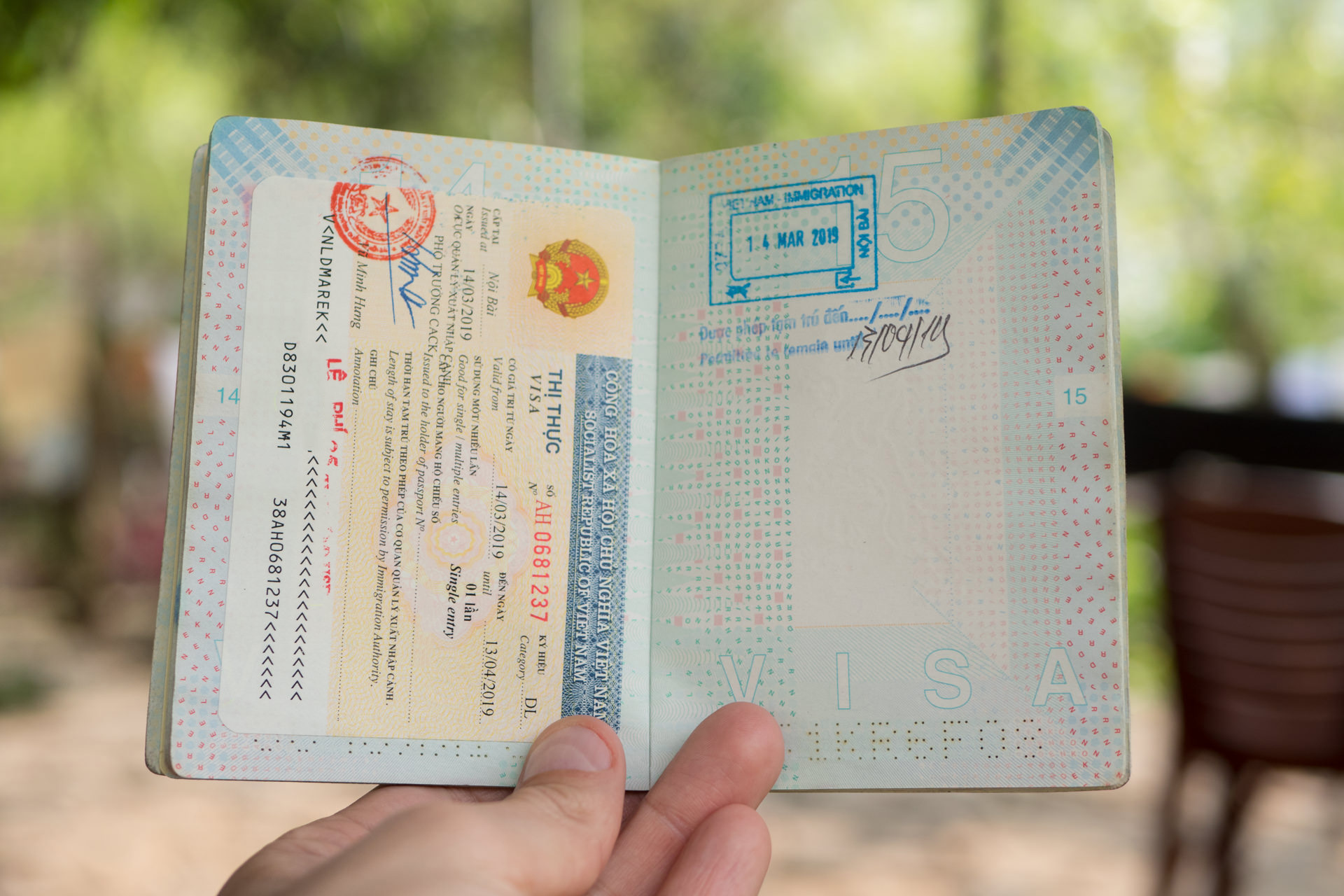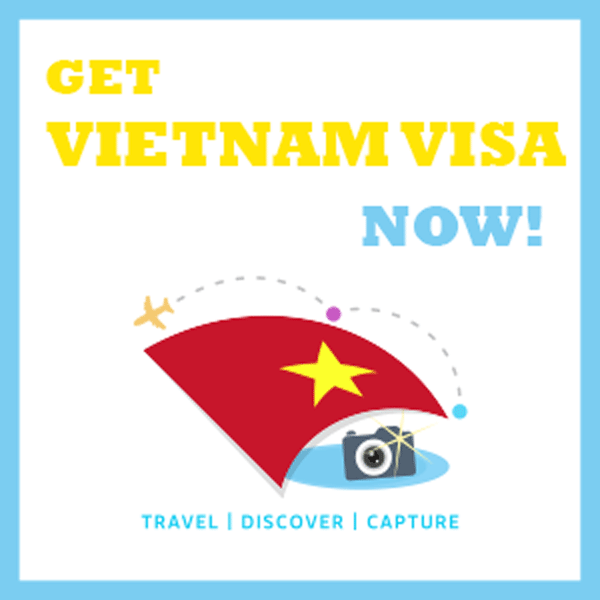Vietnam, with its stunning landscapes, rich history, and vibrant culture, has become an increasingly popular destination for travelers from around the world. If you’re planning a trip to this captivating country, one of the first things you’ll need to consider is obtaining a tourist visa. Navigating the visa application process can seem overwhelming at first, but fear not! In this comprehensive guide, we will walk you through everything you need to know about obtaining a tourist visa for Vietnam.
Table of Contents
Table of Contents
- What is a Tourist Visa?
- Who Needs a Tourist Visa for Vietnam?
- Types of Tourist Visas
- Single Entry Tourist Visa
- Multiple Entry Tourist Visa
- When Should You Apply for a Tourist Visa?
- How to Obtain a Tourist Visa for Vietnam
- Step 1: Determine the Type of Visa You Need
- Step 2: Gather the Required Documents
- Step 3: Submitting Your Application
- Pros and Cons of Obtaining a Tourist Visa for Vietnam
- Pros
- Cons
- Alternatives to a Tourist Visa
- Step-by-Step Guide to Obtaining a Tourist Visa
- Step 1: Research the Requirements
- Step 2: Complete the Application Form
- Step 3: Prepare the Supporting Documents
- Step 4: Submit Your Application
- Step 5: Pay the Visa Fee
- Step 6: Track Your Application Status
- Comparing the Different Visa Options
- Tips for a Smooth Visa Application Process
- The Best Time to Visit Vietnam
- Conclusion
- FAQs (Frequently Asked Questions)
1. What is a Tourist Visa?

A tourist visa is an official document issued by the Vietnamese government that allows foreign individuals to enter and stay in Vietnam for a specific period of time for tourism purposes. It serves as proof that you have been granted permission to visit the country as a tourist.
2. Who Needs a Tourist Visa for Vietnam?
Most nationalities, including citizens from the United States, Canada, Australia, and the European Union, are required to obtain a tourist visa before traveling to Vietnam. However, there are certain exceptions where travelers may be eligible for visa exemptions or visa-free entry based on bilateral agreements between Vietnam and their home countries.
For example, citizens of ASEAN countries, Russia, Japan, South Korea, and a few others can visit Vietnam without a visa for a specified duration. It is crucial to check the latest regulations and requirements specific to your nationality before planning your trip.
3. Types of Tourist Visas

When applying for a tourist visa for Vietnam, you will come across two main types: the single entry tourist visa and the multiple entry tourist visa. Let’s explore each option in detail:
Single Entry Tourist Visa
As the name suggests, a single entry tourist visa allows you to enter Vietnam once during the validity of the visa. Once you leave the country, this visa becomes invalid, and if you plan to re-enter Vietnam, you will need to apply for a new visa.
The single entry tourist visa is suitable for travelers who plan to visit Vietnam for a specific period without leaving and returning during their trip.
Multiple Entry Tourist Visa
If your travel plans involve entering and leaving Vietnam multiple times within a specified period, the multiple entry tourist visa is the more suitable option. This type of visa allows you to enter Vietnam multiple times, making it convenient for those who wish to explore neighboring countries or frequently travel in and out of Vietnam.
It is important to note that the multiple entry tourist visa usually comes with a higher fee compared to the single entry visa.
4. When Should You Apply for a Tourist Visa?
It is advisable to apply for your tourist visa well in advance of your planned departure date to allow ample time for processing and avoid any unnecessary delays or last-minute complications. The exact timing will depend on various factors, including the processing time at the Vietnamese embassy or consulate in your country of residence.
In general, it is recommended to start the visa application process at least one month before your intended travel date. This timeframe allows sufficient time for completing the necessary paperwork, gathering supporting documents, and addressing any unforeseen issues that may arise during the application process.
5. How to Obtain a Tourist Visa for Vietnam
Now that we have covered the basics, let’s dive into the step-by-step process of obtaining a tourist visa for Vietnam.
Step 1: Determine the Type of Visa You Need
Start by assessing your travel plans and deciding whether you require a single entry or multiple entry tourist visa. Consider factors such as the duration of your stay, the number of times you planto enter and exit Vietnam, and your travel itinerary. This will help you determine the most appropriate visa type for your needs.
Step 2: Gather the Required Documents
To apply for a tourist visa, you will need to gather certain documents. The exact requirements may vary depending on the embassy or consulate where you submit your application, but generally, you will need:
- A completed visa application form: You can obtain this form from the Vietnamese embassy or consulate in your country or download it from their official website. Fill out the form accurately and ensure that all information provided is correct.
- Passport-sized photos: Prepare two recent passport-sized photos (usually measuring 4×6 cm) with a white background. Make sure your face is clearly visible in the photos.
- Valid passport: Your passport must be valid for at least six months beyond your planned departure date from Vietnam. It should also have at least one blank page for visa stamping.
- Flight itinerary: Provide proof of your intended entry and exit dates from Vietnam by submitting your flight itinerary. This can be a confirmed round-trip ticket or a booking confirmation for your onward travel.
- Visa approval letter (if applicable): Some nationalities may require a visa approval letter from the Vietnamese Immigration Department. This letter allows you to pick up your visa upon arrival at a designated international airport in Vietnam. Check with the embassy or consulate to see if this requirement applies to you.
- Financial evidence: Depending on the embassy’s requirements, you may need to provide proof of sufficient funds to cover your expenses during your stay in Vietnam. This can include bank statements, credit card statements, or other financial documents.
Step 3: Submitting Your Application
Once you have gathered all the necessary documents, you are ready to submit your application. Contact the Vietnamese embassy or consulate nearest to you to inquire about their specific application process and appointment requirements.
In some cases, you may need to make an appointment to submit your application in person, while other embassies accept applications by mail or through a visa processing agency. Follow the instructions provided by the embassy or consulate carefully to ensure a smooth application submission.
During the submission process, pay any applicable fees and retain the receipt as proof of payment. The visa fees vary depending on the type of visa and the country where you are applying.
Pros and Cons of Obtaining a Tourist Visa for Vietnam
Obtaining a tourist visa for Vietnam comes with its advantages and disadvantages. Let’s take a closer look at the pros and cons:
Pros
- Hassle-free entry: With a valid tourist visa, you can enter Vietnam without any issues at the immigration checkpoint. This provides peace of mind and ensures a smooth arrival to begin your adventure.
- Longer stay duration: A tourist visa allows you to stay in Vietnam for an extended period, typically ranging from 30 days to 90 days, depending on the visa type and your nationality. This gives you ample time to explore the country and immerse yourself in its beauty and culture.
- Flexibility for multiple entries: If you opt for a multiple entry tourist visa, you have the freedom to enter and exit Vietnam multiple times within the visa validity period. This is ideal for travelers planning to visit neighboring countries or taking side trips during their stay in Vietnam.
- Opportunity for cultural immersion: Vietnam offers a rich cultural experience, and having a tourist visa enables you to fully immerse yourself in the local traditions, cuisine, and way of life. You can take part in festivals, interact with locals, and truly embrace the Vietnamese culture.
Cons
- Application process and fees: The process of obtaining a tourist visa can be time-consuming and involves gathering various documents, filling out forms, and paying the requisite fees. Additionally, visa fees can add to the overall cost of your trip, especially if you opt for a multiple entry visa.
- Potential delays and complications: While most visa applications are processed smoothly, there is always a possibility of delays or complications that may arise during the process. This could be due to an incomplete application, missing documents, or changes in immigration policies. It is important to stay informed and allow ample time for processing to avoid any last-minute issues.
- Restrictions on visa-free travel: Certain nationalities enjoy visa-free entry into Vietnam for a specified duration. If you belong to one of these countries, obtaining a tourist visa may not be necessary, saving you time and effort. However, it is essential to check the specific visa regulations based on your nationality before making travel arrangements.
Alternatives to a Tourist Visa
While a tourist visa is the most common option for visiting Vietnam, there are alternatives available depending on your travel plans and circumstances. Here are a few options to consider:
- Visa exemption agreements: As mentioned earlier, Vietnam has visa exemption agreements with certain countries that allow their citizens to enter Vietnam without a visa for a specified period. If you are eligible for visa exemption, this can save youthe time and effort of obtaining a tourist visa. However, it’s important to note the duration and conditions of the exemption to ensure it aligns with your travel plans.
- E-visa: Vietnam also offers an electronic visa (e-visa) system, which allows certain nationalities to apply for a single entry tourist visa online. The e-visa application process is straightforward and can be completed from the comfort of your own home. It eliminates the need for in-person visits to embassies or consulates. However, not all nationalities are eligible for e-visas, so check if your country is included in the program.
- Visa on Arrival (VOA): If you’re flying into Vietnam through one of the designated international airports, you may be eligible for a visa on arrival. This option requires obtaining an approval letter from a visa agency or tour operator in Vietnam before your trip. Upon arrival at the airport, you can present the approval letter, pay the visa fee, and receive your visa. While convenient, it’s important to note that VOA is only available for air travelers and cannot be used for land or sea arrivals.
- Business visa: If you plan to engage in business activities or attend conferences, meetings, or seminars during your stay in Vietnam, you may consider applying for a business visa instead of a tourist visa. A business visa allows for longer stays and additional privileges related to business activities. Make sure to familiarize yourself with the specific requirements and restrictions associated with a business visa.
Step-by-Step Guide to Obtaining a Tourist Visa
To simplify the process of obtaining a tourist visa for Vietnam, here is a step-by-step guide:
Step 1: Research the Requirements
Start by researching the visa requirements specific to your nationality. Visit the official website of the Vietnamese embassy or consulate in your country or consult with a reputable visa processing agency to gather accurate and up-to-date information.
Step 2: Complete the Application Form
Download and complete the visa application form. Ensure that all fields are filled out accurately and legibly. Double-check for any errors or missing information before submitting the form.
Step 3: Prepare the Supporting Documents
Gather all the necessary supporting documents, such as your passport, passport-sized photos, flight itinerary, visa approval letter (if applicable), and financial evidence. Make sure these documents meet the requirements specified by the embassy or consulate.
Step 4: Submit Your Application
Submit your completed application form and supporting documents to the Vietnamese embassy or consulate. Follow their specific instructions regarding submission methods, whether in person, by mail, or through an authorized visa processing agency. Pay any applicable fees and retain the receipt for future reference.
Step 5: Pay the Visa Fee
Pay the required visa fee at the time of application submission. The fee amount may vary depending on the type of visa and your nationality. Ensure that you pay the correct fee and obtain a receipt as proof of payment.
Step 6: Track Your Application Status
After submitting your application, keep track of its progress. If you submitted your application in person, you may receive a collection date for when your visa will be ready for pickup. For applications submitted by mail or through a visa processing agency, inquire about tracking options to monitor the status of your application.
Comparing the Different Visa Options
To choose the most suitable visa option for your travel needs, it’s essential to compare the different types available. Consider factors such as duration of stay, number of entries allowed, and associated costs. Evaluate how each visa aligns with your travel plans and preferences to make an informed decision.
When comparing visas, take into account the following points:
- Duration of stay: Determine how long you plan to stay in Vietnam and choose a visa that offers sufficient validity for your trip.
- Number of entries: If you anticipate multiple entries into Vietnam, opt for a multiple entry visa to avoid the hassle of applying for a new visa each time you re-enter the country.
- Cost: Consider the visa fees associated with each option, including any additional charges for express processing or visa support services.
- Application process: Evaluate the application process for each visa type, considering factors such as in-person visits, paperwork, and processing times. Choose an option that suits your convenience and timeline.
By carefully comparing the different visa options, you can select the one that best meets your travel requirements and preferences.
Tips for a Smooth Visa Application Process
To ensure a smooth visa application process, consider the following tips:
- Start early: Begin the visa application process well in advance of your intended travel date. This allows sufficient time to gather all the required documents, address any issues that may arise, and receive your visa on time.
- Check the validity of your passport: Ensure that your passport has at least six months of validity beyond your planned departure date from Vietnam. If needed, renew your passport before initiating the visa application process3. Follow instructions carefully: Read and follow the instructions provided by the Vietnamese embassy or consulate regarding the visa application process. Pay attention to specific requirements, document formats, and submission methods.
- Provide accurate and complete information: Double-check all the information you provide on the visa application form and supporting documents. Inaccurate or incomplete information can lead to delays or rejection of your application.
- Maintain open communication: If you have any questions or concerns during the application process, don’t hesitate to reach out to the embassy, consulate, or authorized visa processing agency for clarification. Clear communication can help avoid misunderstandings and ensure a smoother process.
- Keep copies of all documents: Make photocopies or scans of all the documents you submit with your application. This includes the application form, passport, photos, flight itinerary, visa approval letter (if applicable), and payment receipts. Having copies on hand can be helpful in case of any unforeseen circumstances or if you need to reference the information later.
- Plan your travel itinerary: Have a clear plan for your travel itinerary, including entry and exit dates, destinations within Vietnam, and any side trips to neighboring countries. This will help determine the most appropriate visa type for your needs.
- Be aware of peak seasons: Consider the timing of your visit and potential peak tourist seasons. During busy periods, visa processing times may be longer due to increased demand. It’s advisable to apply well in advance to avoid any inconveniences.
- Seek professional assistance if needed: If you find the visa application process overwhelming or confusing, consider seeking assistance from authorized visa processing agencies. These agencies can guide you through the process, review your documents, and handle the application on your behalf.
- Stay updated on visa regulations: Visa requirements and regulations can change over time. Stay informed about any updates or changes by regularly checking the official websites of the Vietnamese embassy or consulate or consulting with relevant authorities. This will ensure that you have the latest information and can plan your trip accordingly.
By following these tips, you can enhance your chances of a smooth and successful visa application process, allowing you to focus on enjoying your upcoming trip to Vietnam.
The Best Time to Visit Vietnam
Vietnam is a country with diverse climates and regions, offering different experiences throughout the year. The best time to visit Vietnam depends on the specific destinations you plan to explore and the activities you wish to engage in.
Generally, the months from November to April are considered the best time to visit Vietnam as the weather is more favorable with cooler temperatures and less rainfall. This period is particularly ideal for exploring popular tourist destinations such as Hanoi, Ho Chi Minh City, Halong Bay, Hue, Hoi An, and the Mekong Delta.
However, it’s important to note that the climate varies across different regions of Vietnam. For example, the northern regions have distinct seasons with cold winters, while the southern regions experience a tropical climate with high humidity year-round.
If you’re planning to visit mountainous areas like Sapa or Dalat, the summer months from May to September offer pleasant weather and lush landscapes. However, be prepared for occasional showers.
Ultimately, the best time to visit Vietnam depends on your preferences and the specific experiences you seek. Research the weather patterns, events, and festivals in the regions you plan to visit to make an informed decision about the timing of your trip.
Conclusion
Obtaining a tourist visa is an essential step for visiting Vietnam. It allows you to explore the beauty and diversity of this captivating country. By understanding the visa requirements, gathering the necessary documents, and following the application process diligently, you can obtain your tourist visa smoothly and embark on an unforgettable journey through the enchanting landscapes and rich cultural heritage of Vietnam. Remember to plan ahead, stay informed, and seek assistance when needed to ensure a hassle-free visa application experience.






